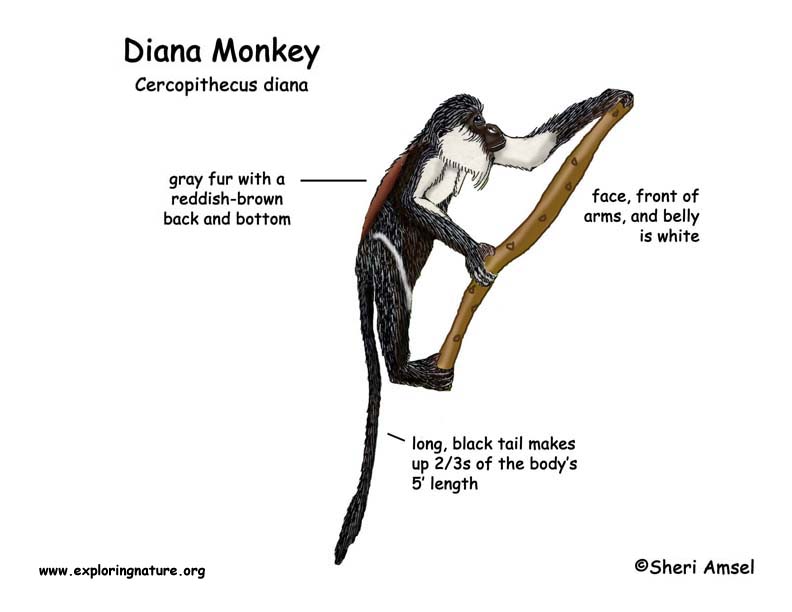

Diana monkeys live in Western Africa.
They can be found in the very tallest part of mature rainforest. They spend most of their lives up in the trees (arboreal).
Diana monkeys are grey, with a reddish-brown highlights on their back and bottom and a black tail. They have a white stripe over each thigh and across their forehead. They can weigh more than 10 pounds and measure 5-feet long including their tails, which make up 2/3 of their length.
They bare their teeth when they are excited. Diana monkeys live in groups of up to 50, mostly females with 1 male.
They eat leaves, fruit, flowers and seeds.
Predators are the crowned eagle and the leopard.
Females are pregnant for 6 months (gestation) and have 1 young.
They can live more than 30 years in the wild. They are considered endangered.
Kingdom: Animalia
Phylum: Chordata
Subphylum: Vertebrata
Class: Mammalia
Order: Primates
Suborder: Haplorrhini
Family: Cercopithecidae
Subfamily: Cercopithecinae
Genus: Cercopithecus
Species: Cercopithecus diana
When you research information you must cite the reference. Citing for websites is different from citing from books, magazines and periodicals. The style of citing shown here is from the MLA Style Citations (Modern Language Association).
When citing a WEBSITE the general format is as follows.
Author Last Name, First Name(s). "Title: Subtitle of Part of Web Page, if appropriate." Title: Subtitle: Section of Page if appropriate. Sponsoring/Publishing Agency, If Given. Additional significant descriptive information. Date of Electronic Publication or other Date, such as Last Updated. Day Month Year of access < URL >.
Amsel, Sheri. "Monkey (Diana)" Exploring Nature Educational Resource ©2005-2024. December 16, 2024
< http://www.exploringnature.org/db/view/349 >

